 |
 |
 |
 |
 |
|
This two-hour program is divided into 13 chapters.
Choose any chapter below and select QuickTime, RealVideo, or
Windows Media Player to begin viewing.
If you experience difficulty viewing, it may be due to high demand.
We regret this and suggest you try back at another time.
Technical Help | Feedback | Program Credits | Program Transcript
|
 |
 |
|

watch chapter 1 in
Quicktime
RealVideo
Windows Media: hi |
low
|
|
Beginnings
This chapter:
- notes that Percy Julian was captivated by plants, particularly by their
ability to produce powerful chemicals.
- states that Julian's parents were teachers, and his father provided the
family with books because public libraries were closed to African-Americans.
- reviews Julian's early education, which occurred at a time when black
children in Alabama were not allowed to study past the 8th-grade.
running time 7:02
|
 |
 |
 |
 |
 |
|
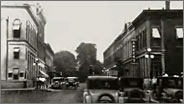
watch chapter 2 in
Quicktime
RealVideo
Windows Media: hi |
low
|
|
Black & White
This chapter:
- states that Julian entered Depauw University in Greencastle, Indiana, and
reviews the difficulties he faced there.
- points out that the first African-American to earn a PhD in chemistry,
St. Elmo Brady, was a great source of inspiration for Julian.
- reports that after four years at Depauw, Julian earned a bachelor's
degree in chemistry and graduated Phi Beta Kappa and first in his class.
- recounts the challenges Julian faced prior to and while earning his
master's degree from Harvard University in 1923.
running time 8:09
|
 |
 |
 |
 |
 |
|
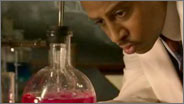
watch chapter 3 in
Quicktime
RealVideo
Windows Media: hi |
low
|
|
Alkaloids
This chapter:
- reports that Julian won a fellowship to study at the University of Vienna
in Austria in 1929, where he collaborated with Josef Pikel in natural products
chemistry.
- tells that in Vienna, Julian worked with alkaloids—powerful plant
chemicals that evolved to protect plants—to investigate their potential
medicinal uses.
- explains that Julian focused on the difficult task of isolating and
identifying the chemical structure of the active alkaloid in Corydalis
cava.
running time 8:51
|
 |
 |
 |
 |
 |
|

watch chapter 4 in
Quicktime
RealVideo
Windows Media: hi |
low
|
|
Rumors & Ruin
This chapter:
- reports on Julian's move back to Howard in 1931.
- points out that Julian was determined to publish research while at
Howard.
- relates the university politics and scandal that led to Julian's resignation
from Howard and heralded his return to Depauw to work as a research fellow.
- portrays Julian as an exceptional lecturer and orator and relates how he
put Depauw on the map for undergraduate research.
- reports why Julian was forced to stop teaching and notes that he turned
to a high-stakes research project that would either make or break his
career.
running time 6:12
|
 |
 |
 |
 |
 |
|
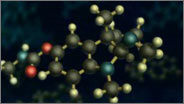
watch chapter 5 in
Quicktime
RealVideo
Windows Media: hi |
low
|
|
Race for the Synthesis
This chapter:
- describes Julian's efforts to revive his career by taking on one of the
world's leading organic chemists in a race to synthesize the alkaloid
physostigmine.
- points out that synthesis—the construction of a molecule one step
at a time from simple building blocks—was the highest calling for a
chemist.
- details how Julian refuted the work of his competitor—the first to
publish physostigmine synthesis—and was determined to accurately
synthesize the molecule.
running time 8:30
|
 |
 |
 |
 |
 |
|
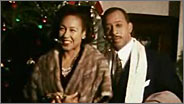
watch chapter 6 in
Quicktime
RealVideo
Windows Media: hi |
low
|
|
Julian lands at Glidden
This chapter:
- reports on Julian's elegant synthesis of physostigmine, achieved in a
minimal number of steps.
- identifies the continuing racism Julian faced in his pursuit for
employment before he was hired as director of research at the Glidden Company
in Chicago.
running time 6:47
|
 |
 |
 |
 |
 |
|
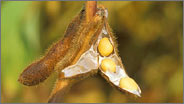
watch chapter 7 in
Quicktime
RealVideo
Windows Media: hi |
low
|
|
The Soybean
This chapter:
- points out that soy is used in a wide range of products, from food and
medicine to paper and plastics.
- describes Julian's strong work ethic and his drive to encourage those who
worked with him at Glidden.
- looks at how corporate chemical research began to change the way in which
people lived.
running time 8:34
|
 |
 |
 |
 |
 |
|
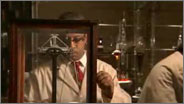
watch chapter 8 in
Quicktime
RealVideo
Windows Media: hi |
low
|
|
Steroids
This chapter:
- explains that although Julian was extremely successful at Glidden, he
wanted to pursue his own research.
- emphasizes Julian's desire to synthesize steroids, including
progesterone, because the work would benefit human health.
- relates that in the mid-1930s, scientists realized that plant steroids
could be converted into animal steroids.
- reports on Julian's work to synthesize progesterone from plant steroids
after his accidental discovery of a method to isolate steroids from soybean
oil.
- explains that some companies began making hormones from giant yams, which
led to the development of the birth control pill.
running time 10:31
|
 |
 |
 |
 |
 |
|

watch chapter 9 in
Quicktime
RealVideo
Windows Media: hi |
low
|
|
Oak Park
This chapter:
- states that Julian's work at Glidden won him national acclaim.
- specifies that Julian's isolation of the alpha protein from soy led to
the development of several new products, including a life-saving fire-fighting
foam.
- notes that Julian was named to the boards of a half dozen colleges and universities,
won the prestigious Springarn Medal from the NAACP, and was named Chicagoan of
the Year.
- reports on Julian's move with his family to Oak Park, Illinois—a
cultured, privileged, and mainly white community outside of Chicago—where
his house was set on fire and bombed.
running time 10:25
|
 |
 |
 |
 |
 |
|
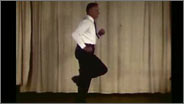
watch chapter 10 in
Quicktime
RealVideo
Windows Media: hi |
low
|
|
The Miracle Drug
This chapter:
- describes several treatments for rheumatoid arthritis, most of which were
ineffective.
- relates the success of Compound E for rheumatoid arthritis sufferers.
- tells how scientists searched for an easier and less expensive way to
make cortisone, a natural hormone made by the adrenal glands.
- details the path Julian took to try to synthesize Compound S, a steroid
that required only one additional step to make cortisone.
running time 8:51
|
 |
 |
 |
 |
 |
|
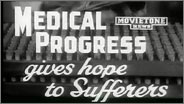
watch chapter 11 in
Quicktime
RealVideo
Windows Media: hi |
low
|
|
Success
This chapter:
- notes how Julian's team was upstaged by the Upjohn Company after
researchers there found that a common mold could complete cortisone
synthesis.
- explains that Compound S became a very important material, and Julian had
the process to make it.
- reports that Upjohn decided to produce cortisone from progesterone made
using the Mexican yam.
- reveals why Julian left Glidden in 1953 to start his own business, Julian
Laboratories.
- notes that Julian received a contract to make Compound S for Upjohn, but
a rival company, Syntex, refused to sell him the root extract he needed.
- presents the obstacles Julian had to overcome to make his business
succeed.
running time 10:04
|
 |
 |
 |
 |
 |
|
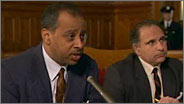
watch chapter 12 in
Quicktime
RealVideo
Windows Media: hi |
low
|
|
Julian Laboratories
This chapter:
- details how Julian came to use barbasco root from Guatemala to obtain the
necessary extract to make Compound S.
- notes that Julian undercharged when selling Compound S because he wanted
medicines to be available to as many people as possible.
- recounts that the U.S. Department of Justice's action against Syntex
allowed Julian to open a plant in Mexico.
- reports on the eventual success of Julian's company.
- details Julian's fight for racial equality.
running time 8:46
|
 |
 |
 |
 |
 |
|
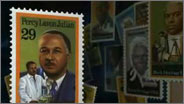
watch chapter 13 in
Quicktime
RealVideo
Windows Media: hi |
low
|
|
Julian's Legacy
This chapter:
- recounts that Julian received 18 honorary degrees, more that 12
civic and scientific awards, and was elected to the National Academy of
Sciences.
- points out that while racial discrimination prevented Julian from having
the academic research experiences he would have liked to have had, he made the
best life in chemistry that he could for himself at the time.
- states that Julian died in April 1975 of cancer.
- reports that the U.S. Postal Service honored Julian in a stamp in 1993,
and in 1999, the American Chemical Society named his synthesis of physostigmine
one of the top 25 achievements in the history of American chemistry.
running time 5:45
|
 |
 |
 |